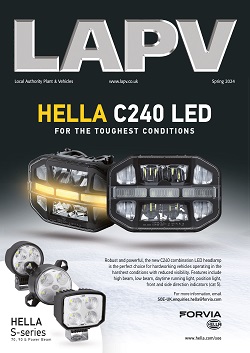Whether you operate one or more waste and recycling sites, managing the influx of material efficiently and economically are two of the biggest challenges. Chris Cox, JCB's general manager for the waste and recycling sector, explains how the right machine can help improve operations and safety. Dan Roberts reports.
With tight budgets, fluctuating commodity prices and the pressure to reduce waste sent to landfill, managing household waste recycling centres (HWRCs) is not an easy job. Different materials, such as cardboard, plastics, waste electrical and electronic equipment (WEEE), fridges, green waste and the like, all present different challenges for disposal, site logistics and efficient sorting.
So when looking for ways to improve the management of a waste facility, it is worth considering how the right machinery can help carry out tasks more efficiently and safely.
A common expression in the waste and recycling industry is 'getting the weight on' which means getting as much weight as is legally permitted into a bin for haulage.
'The more you get into a container, the fewer journeys are required and, therefore, haulage costs are reduced,' said Chris Cox, JCB's general manager for the waste and recycling sector.
'The carbon footprint will also be smaller thanks to fewer journeys, less fuel use and less wear-and-tear to the lorry. The task will also involve fewer man hours, helping to increase efficiency. Minimising transport costs can contribute to running a small, more efficient fleet or better using large fleet.'
This is where using the right techniques and machinery for compaction comes in, as they can help you achieve maximum efficiency.
'For the best results, containers should be compacted in two or three stages,' he added.
'The waste should be compressed evenly, each time three feet of material are added and the process repeated until the bin is full. This staged compacting process saves money as it ensures the bin is full.'
Conducting the process in stages means the material is easier to distribute and manipulate. This, in turn, removes air pockets and ensures the waste offers little resistance. It also reduces excessive wear on the machine, reducing downtime for maintenance and repairs.
Using a compacting machine designed for the job means the process can use the appropriate amount of power in the appropriate way which can dramatically reduce costs.
'JCB's Wastemaster range is the largest machine collection for the waste and recycling industries. The JCB 5CX Wastemaster was built for compacting waste efficiently and evenly, providing the operator with 7:10 metre excavator arm with extending dipper, allowing full access to all areas of a container. The compaction wheel running over the waste ensures space is maximised,' said Cox.
'The 5CX is readily mobile and can operate efficiently on several different sites if they are close together, increasing the machine up-time.
'Safety is paramount on waste and recycling sites and extra care is needed at those used by the public. The 5CX Wastemaster has four jack legs which raise the machine off the ground and provide excellent visibility when compacting. It also has safety check valves on the four stabiliser legs which reduce the chance of any mechanical failure.
The excavator arm ' although flexible ' remains in a contained area, operating either side-on to a container or from the front and back.
'Ultimately, while the JCB Wastemaster is a compaction machine, it can also improve safety too,' concluded Cox.

